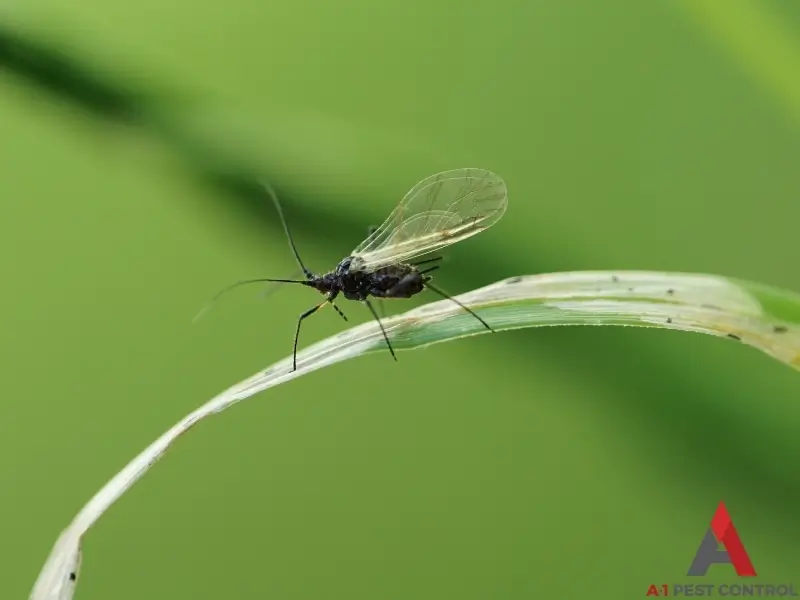
Eye Gnats
Eye Gnats in North Carolina: Identification and Control
Eye gnats are small, persistent insects that hover around the eyes, noses, and mouths of humans and animals. Common in North Carolina, eye gnats can cause irritation and even pose health risks. A-1 Pest Control is your trusted partner in identifying and managing eye gnat infestations, offering effective solutions to keep your property safe and comfortable.

Eye Gnats: What Are They and How to Identify Them?
Eye gnats are small, dark-colored insects that are often mistaken for other types of flies. However, their unique behavior and attraction to moist areas—like the eyes and nose—distinguish them.
Eye gnats are tiny, typically measuring around 1/8 inch in length. They have a dark, shiny body, large eyes, and transparent wings. They tend to move quickly in small, erratic patterns.

Eye gnats thrive in warm climates with organic-rich soils, making North Carolina a perfect environment for them. They are often found in areas with moist conditions, such as decomposing organic matter, manure piles, and agricultural fields. These gnats are attracted to the moisture found on the skin, particularly around the eyes, nose, and mouth, where they feed on bodily fluids.
Why Eye Gnats Are a Serious Problem in North Carolina
While small, eye gnats can cause big problems for residents and animals in North Carolina.
Irritation to Humans and Animals
Eye gnats’ constant hovering around faces can lead to irritation, making it difficult to spend any time outside when these pests are around. For animals, the presence of eye gnats can cause distress, leading to rubbing, scratching, and even injury.
Health Risks
Eye gnats are more than just an annoyance—they can also spread diseases. One of the most concerning risks is their ability to transmit conjunctivitis, also known as pink eye, by feeding on infected people and then transferring bacteria or viruses.
How to Identify an Eye Gnat Infestation
Identifying an eye gnat infestation is the first step to getting rid of them.
Signs of Eye Gnats
Here are the most common signs that you are dealing with an eye gnat infestation:
- Frequent hovering around the faces of people or livestock
- A noticeable presence of small, dark flies around moist areas
- Irritation or discomfort experienced when outdoors, particularly near moist soil or decomposing organic matter
Common Locations
Much like fungus gnats and buffalo gnats, eye gnats are typically found in areas with sandy soil, agricultural fields, and compost piles. They’re most at home in environments where organic matter decomposes, providing the moisture and nutrients they need to breed and feed.
How to Prevent Eye Gnats on Your Property
Taking proactive measures to reduce the conditions that attract eye gnats can help minimize their presence around your property.
Reduce Organic Matter
Eye gnats are attracted to moist, decaying organic matter. Minimize compost piles, manure, and other organic waste near living areas.
Improve Drainage
Ensure that your property has proper drainage to avoid the creation of moist soil conditions, which can attract eye gnats.
Take Protective Measures
When spending time outdoors, use hats, protective clothing, and insect repellents to reduce the likelihood of attracting eye gnats.
Frequently Asked Questions About Eye Gnats
What attracts eye gnats to people and animals?
Eye gnats are attracted to the moisture around the eyes, nose, and mouth. They feed on bodily fluids like tears, mucus, and sweat, which makes humans and animals particularly vulnerable.
Are eye gnats harmful to livestock?
Yes, eye gnats can cause distress to livestock by irritating their eyes, noses, and wounds. In some cases, the irritation may lead to injury or infection from rubbing or scratching.
How quickly can eye gnats be eliminated with professional treatment?
The timeline for eliminating eye gnats depends on the severity of the infestation and the treatments applied. Typically, noticeable improvements can be seen within a few weeks of treatment.

